Desert plants are remarkable survivors, thriving in some of the harshest environments on Earth. They have developed unique adaptations to withstand extreme heat, scarce water, and intense sunlight. From water-storing succulents to deep-rooted shrubs, they play a crucial role in sustaining desert ecosystems. In this article, we’ll explore a variety of unique desert plants that not only survive but flourish in these tough climates, showcasing nature’s incredible ability to adapt and thrive in the most challenging conditions.
Creosote Bush (Larrea tridentata)
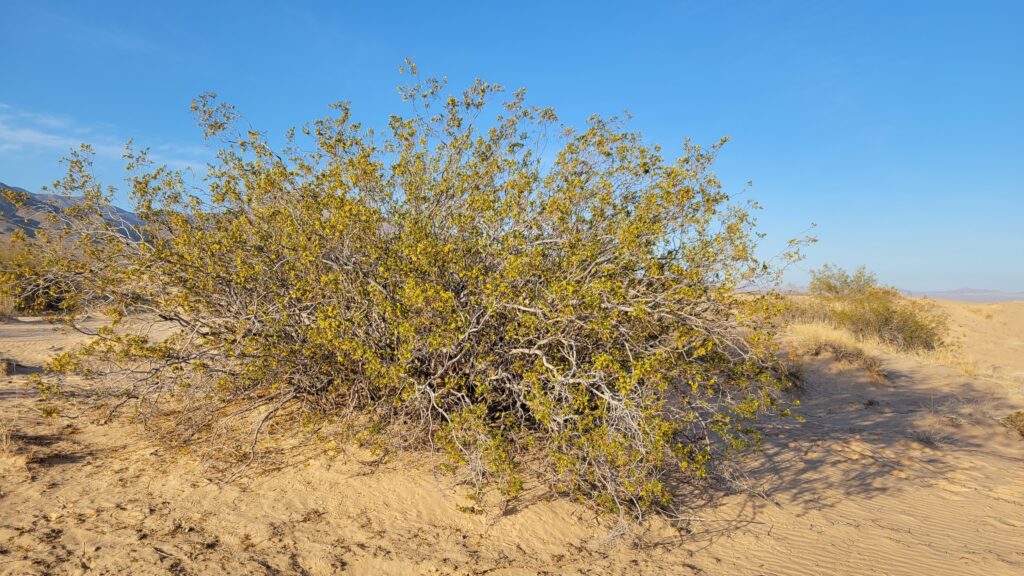
The Larrea tridentata, or Creosote Bush, is a prominent desert shrub found in the Sonoran, Mojave, and Chihuahuan deserts. Its resin-coated leaves help reduce water loss, enabling it to thrive in arid climates. The plant’s roots are shallow but extensive, allowing it to collect water from brief rain showers, a vital adaptation for survival in areas with minimal precipitation. During the rainy season, it emits a distinctive earthy smell that fills the desert air. These are capable of reproducing through cloning, with some colonies being over 10,000 years old, making them some of the oldest living organisms. Their small yellow flowers bloom in spring and summer, adding a burst of color to the otherwise barren landscape. Despite their hardiness, these bushes can suffer from extended droughts but quickly recover with minimal rainfall. Additionally, their medicinal properties have been recognized by indigenous cultures for treating various ailments.
Giant Saguaro Cactus (Carnegiea gigantea)

The Carnegiea gigantea, or Giant Saguaro, is one of the most iconic cacti of the American Southwest, particularly in the Sonoran Desert. These towering plants can grow up to 50 feet tall and are known for their branching arms, which grow slowly over many decades. These thrive in desert environments by storing water in their thick, pleated skin, allowing them to survive long periods without rainfall. Their shallow root systems spread out wide to capture rainwater efficiently, even from light showers. In the summer, the saguaro blooms with large white flowers that attract pollinators like bees and bats. The red fruit that follows provides nourishment for desert wildlife. Despite their ability to withstand extreme heat, they can tolerate cold snaps down to 25°F for short periods.
Ocotillo (Fouquieria splendens)
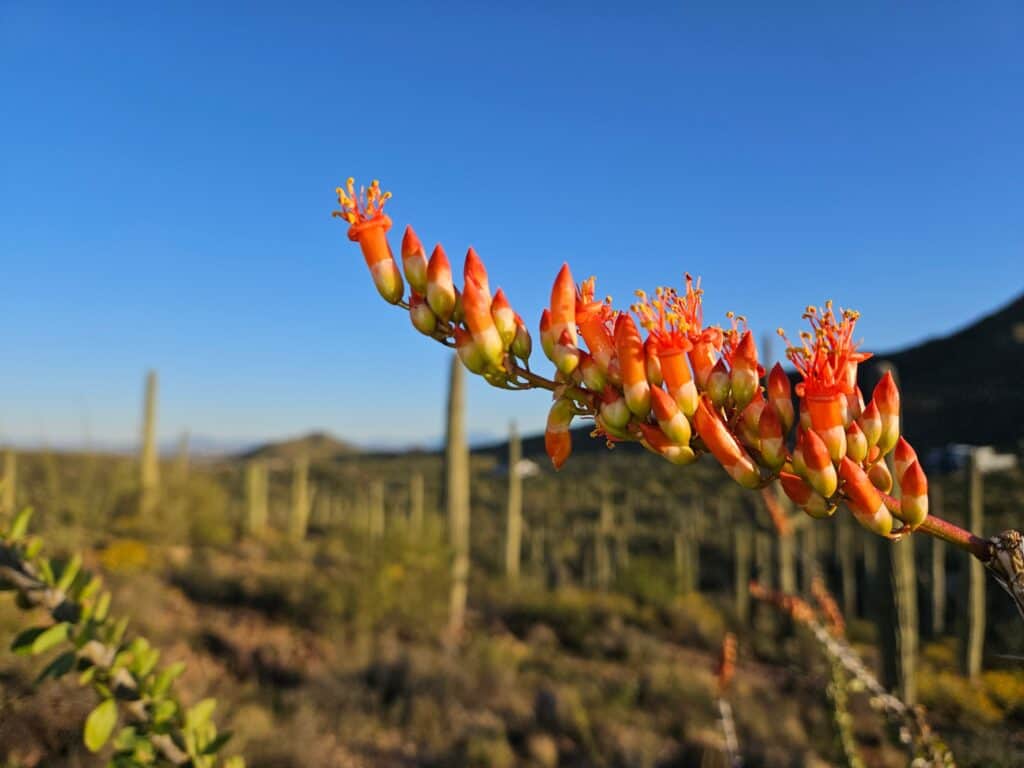
The Fouquieria splendens, commonly known as Ocotillo, is a desert plant native to the southwestern United States and northern Mexico. Although it resembles a cactus, it is actually a shrub with tall, spiny stems that seem lifeless for much of the year. However, after rainfall, the plant transforms, sprouting bright green leaves and vibrant red flowers. This rapid response to moisture is crucial for its survival in arid regions like the Sonoran and Chihuahuan deserts. The leaves fall off quickly after the rain to conserve water. Their stems are also highly efficient at photosynthesis, even when leafless, allowing the plant to thrive under intense sunlight. The flowers attract hummingbirds and other pollinators, helping to sustain the local ecosystem. Ocotillo wood is also traditionally used by indigenous peoples for fencing and shelter.
Desert Marigold (Baileya multiradiata)
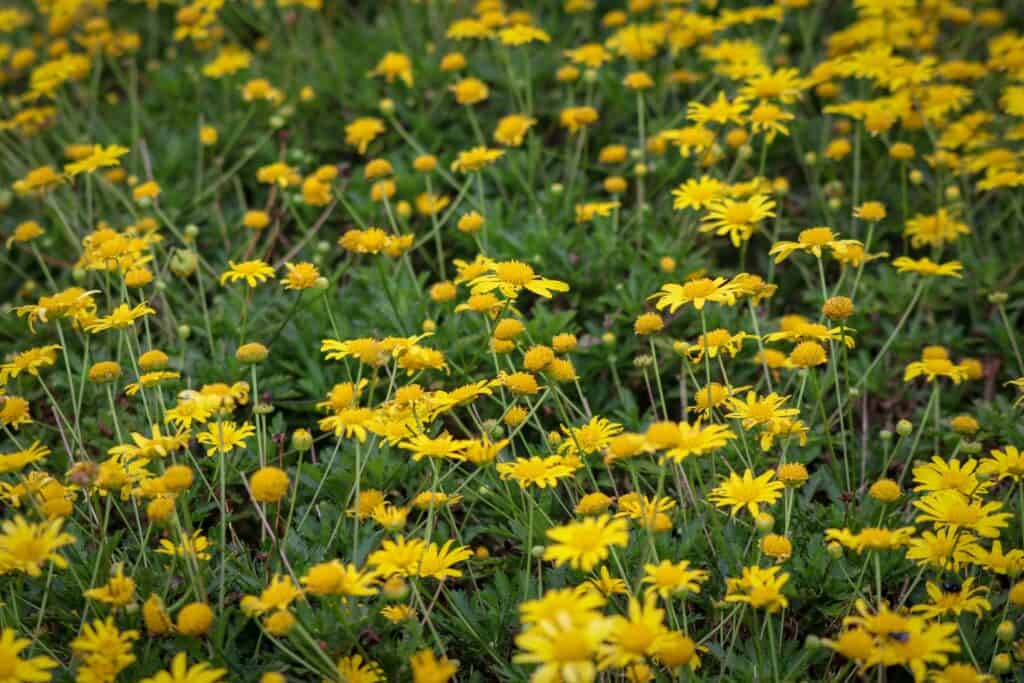
The Baileya multiradiata, or Desert Marigold, is a perennial plant native to the southwestern U.S. and northern Mexico. This vibrant plant brightens the desert with its yellow daisy-like flowers, which bloom from spring to fall. These thrive in harsh conditions due to their ability to reflect sunlight with their silvery, hairy leaves, reducing water loss. They grow in well-drained, sandy soils and can survive on very little rainfall. The plant’s deep root system allows it to access moisture from the soil, even during droughts. Its seeds are well-adapted to survive extreme temperatures and can remain dormant for years, waiting for the right conditions to germinate. The flowers provide an important source of nectar for pollinators like bees and butterflies. Desert marigolds are also often used in xeriscaping due to their drought tolerance and long flowering season.
Joshua Tree (Yucca brevifolia)
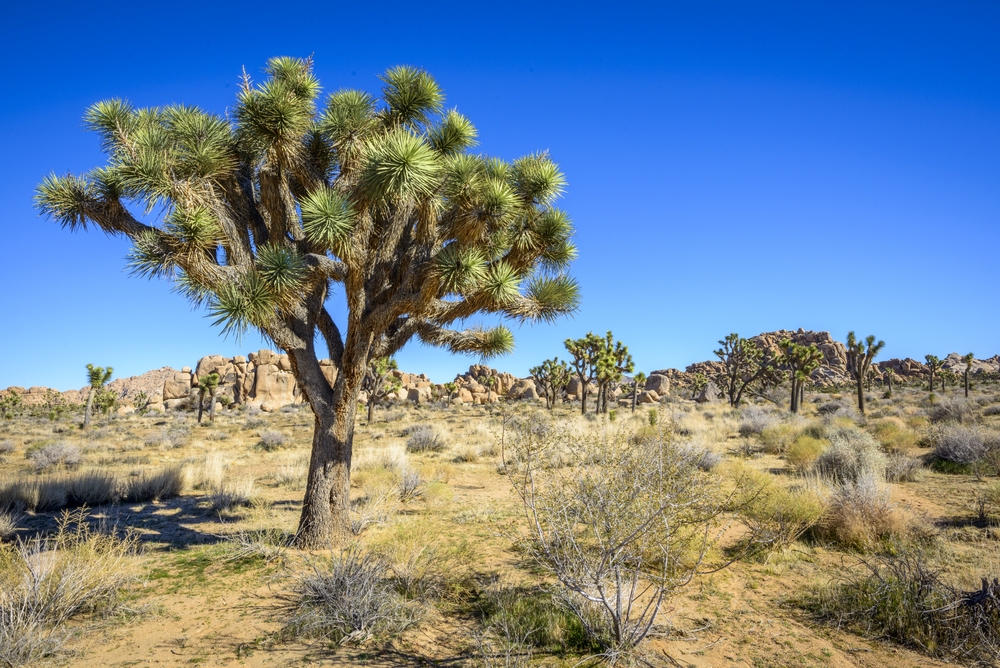
The Yucca brevifolia, or Joshua Tree, is a unique desert plant native to the Mojave Desert. This tree-like yucca grows slowly, reaching heights of up to 40 feet, and can live for hundreds of years. They thrive in the harsh desert environment by storing water in their thick, fibrous trunks and using their deep root systems to tap into underground moisture. They are also highly resistant to drought, with spiky leaves that minimize water loss. In spring, the tree produces clusters of greenish-white flowers, which are pollinated by a specific species of moth. Their slow growth and long lifespan make them highly sensitive to environmental changes, and unfortunately, they are now under threat from climate change and habitat loss.
Barrel Cactus (Ferocactus wislizeni)
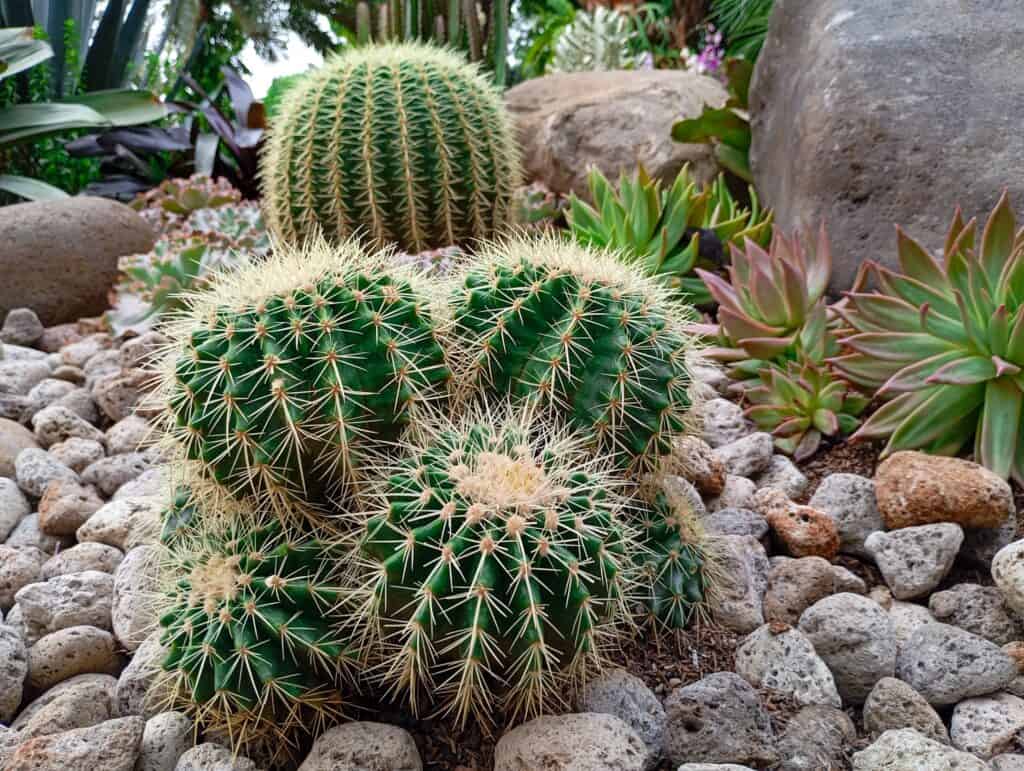
The Ferocactus wislizeni, commonly known as the Barrel Cactus, is a familiar sight in the deserts of the southwestern United States and Mexico. Shaped like a large, spiny barrel, this cactus can grow up to 10 feet tall and is well-adapted to survive extreme desert conditions. It stores water in its thick, ribbed body, allowing it to endure long periods of drought. The ribs enable the plant to expand and contract depending on its water content, helping to conserve moisture. They have shallow roots that spread wide to capture rainwater efficiently. In late summer, the cactus produces bright yellow or red flowers, which are pollinated by bees and other insects. The fruit that follows is edible and provides nourishment for desert animals.
Desert Lily (Hesperocallis undulata)
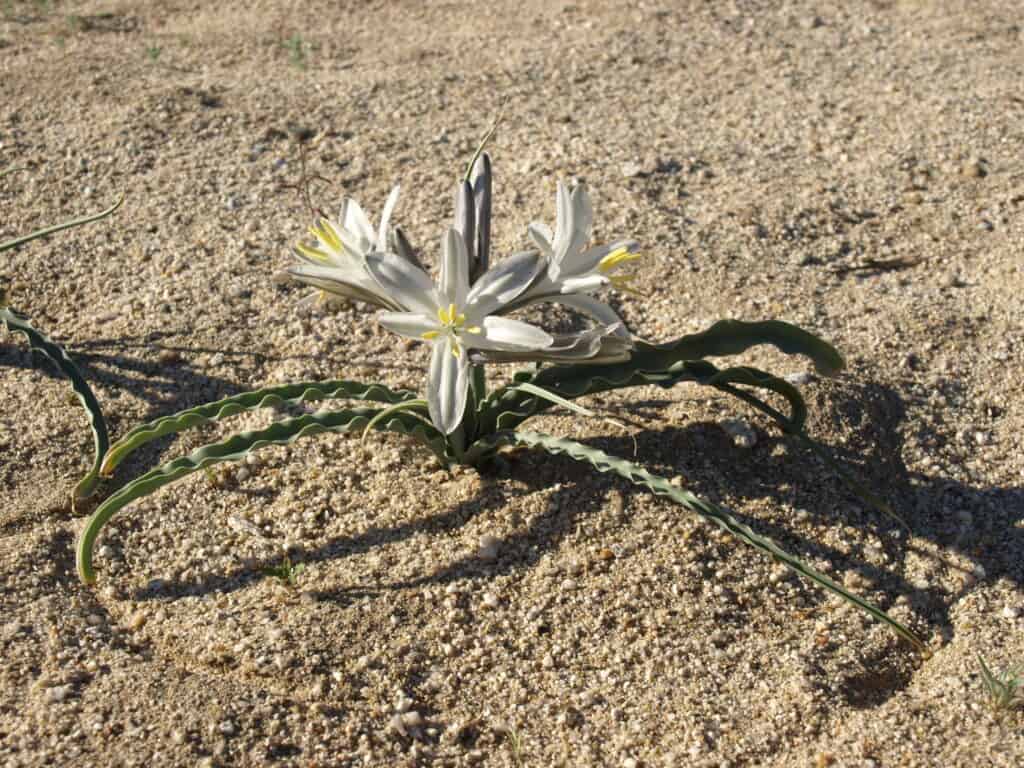
The Hesperocallis undulata, or Desert Lily, is a striking plant that grows in the sandy soils of the southwestern U.S. and northern Mexico. Despite the harsh environment, it thrives by producing deep bulbs that store water and nutrients, allowing it to survive long dry spells. In early spring, the plant sends up a tall stem topped with large, white, lily-like flowers that bloom after rain. These flowers attract pollinators such as bees and moths, which are crucial for the plant’s reproduction. The desert lily’s leaves are narrow and wavy, helping to reduce water loss in the intense desert heat. The plant’s ability to remain dormant for extended periods, waiting for favorable conditions, is key to its survival. Historically, the bulbs of the desert lily were used as a food source by indigenous peoples.
Soaptree Yucca (Yucca elata)
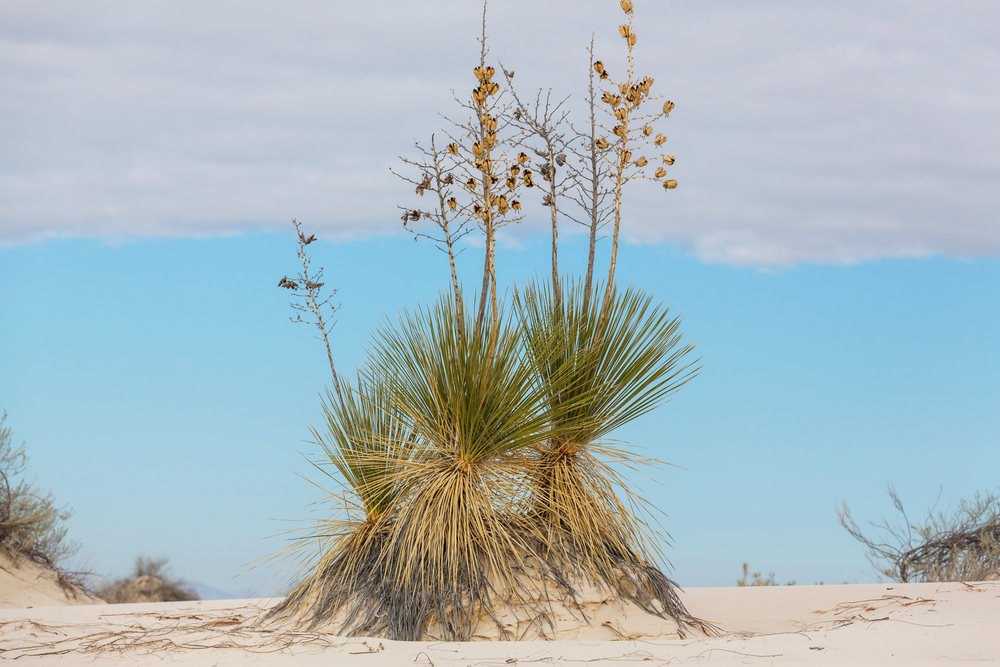
The Yucca elata, or Soaptree Yucca, is a versatile desert plant native to the southwestern United States and northern Mexico. This plant is well-known for its long, narrow leaves and tall flowering spikes, which can reach heights of up to 20 feet. It thrives in arid environments by storing water in its thick trunk and deep roots, which help it access moisture during droughts. Its fibrous leaves are coated with a waxy substance that reduces water loss. In the spring, the plant produces clusters of creamy white flowers, which are pollinated by moths. The soaptree yucca gets its name from the saponins in its roots, which were traditionally used by indigenous peoples to make soap. Its fibrous leaves were also used to make baskets, mats, and ropes.
Elephant Tree (Bursera microphylla)
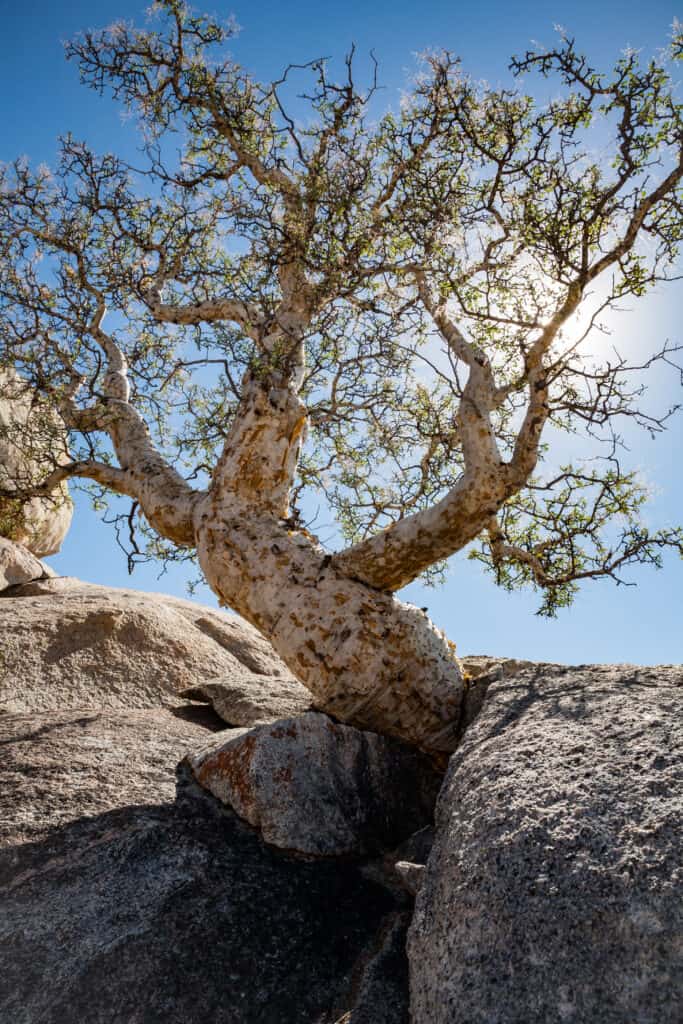
The Bursera microphylla, or Elephant Tree, is a small, water-storing tree found in the deserts of the southwestern United States and northern Mexico. Its thick, swollen trunk helps the plant store water, allowing it to survive in extremely arid conditions. It has small, waxy leaves that minimize water loss and can remain leafless during prolonged droughts. In the spring, the tree produces clusters of small, fragrant flowers that attract pollinators such as bees and butterflies. Its deep roots enable it to access underground moisture, while its bark is capable of photosynthesis, ensuring the tree can continue to produce energy even when it sheds its leaves. They are also used in traditional medicine for their anti-inflammatory properties.
Jumping Cholla (Cylindropuntia fulgida)
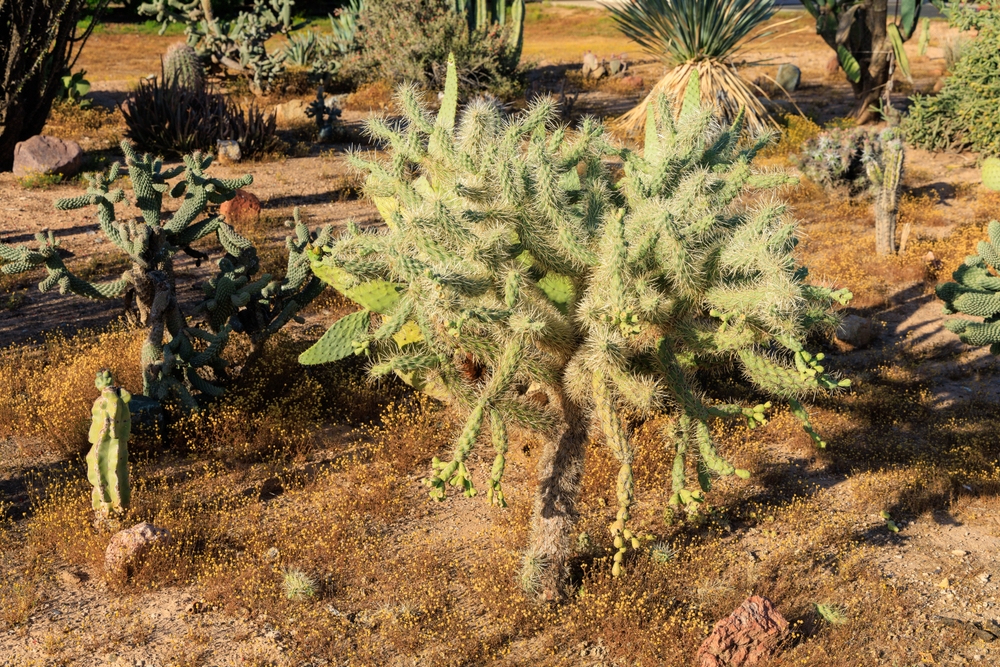
The Cylindropuntia fulgida, or Jumping Cholla, is a unique cactus native to the Sonoran Desert. This cactus is known for its barbed spines that easily detach and latch onto anything that brushes against it, giving it the nickname “jumping” cholla. It thrives in harsh desert environments by storing water in its thick, segmented stems and reducing water loss through its spiny surface. The cactus produces pink and white flowers in the summer, followed by fruit that provides food for desert animals. Its shallow roots quickly absorb moisture from brief rain showers, helping the plant survive long dry spells.
Yellow Palo Verde (Parkinsonia microphylla)
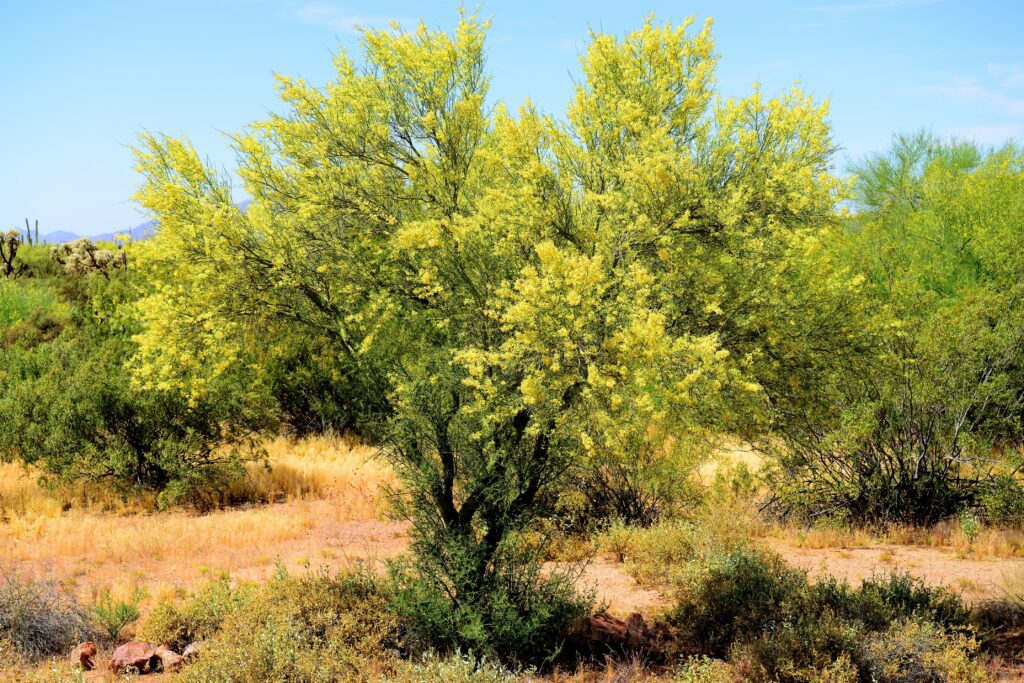
The Parkinsonia microphylla, or Yellow Palo Verde, is a small desert tree native to the Sonoran Desert. Its green bark allows it to perform photosynthesis even when it sheds its small, delicate leaves during dry seasons. This adaptation helps it conserve water while still producing energy. This tree blooms with vibrant yellow flowers after rain, attracting pollinators such as bees and birds. Its deep root system allows it to access underground water, making it highly drought-resistant. Its seeds, encased in tough pods, remain dormant until sufficient rain triggers germination, ensuring the next generation can survive in the harsh desert climate.
Mojave Aster (Xylorhiza tortifolia)
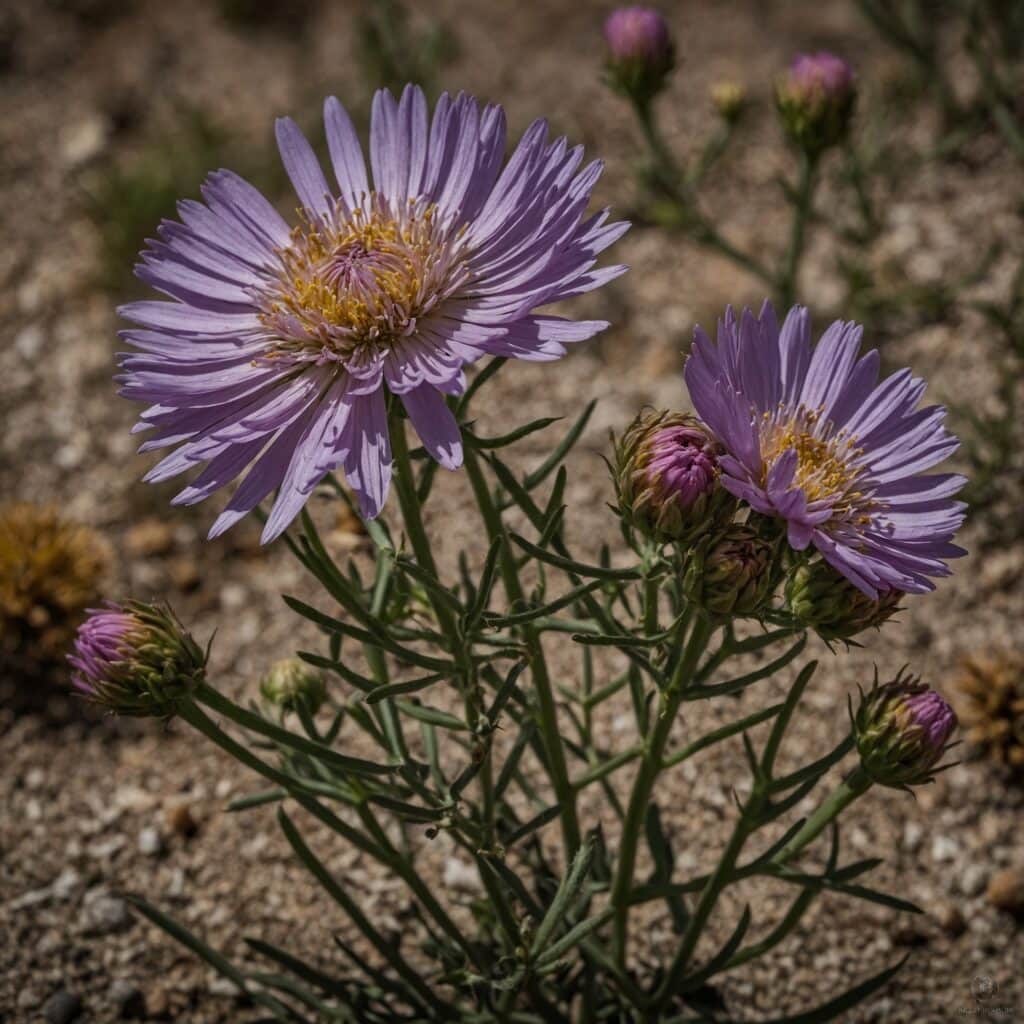
The Xylorhiza tortifolia, or Mojave Aster, is a beautiful flowering plant native to the Mojave Desert and surrounding regions. It thrives in rocky, well-drained soils and can survive with very little water. Its silvery-green leaves are covered in fine hairs that reflect sunlight and reduce water loss. In the spring, this plant produces large, daisy-like flowers with lavender petals and a yellow center, providing a splash of color to the desert landscape. These flowers attract a variety of pollinators, including bees and butterflies. Its deep root system allows it to access moisture from the soil, even during droughts. Mojave asters are often found growing alongside other desert plants such as creosote bushes and Joshua trees, forming part of the unique desert flora.
Ratany (Krameria bicolor)
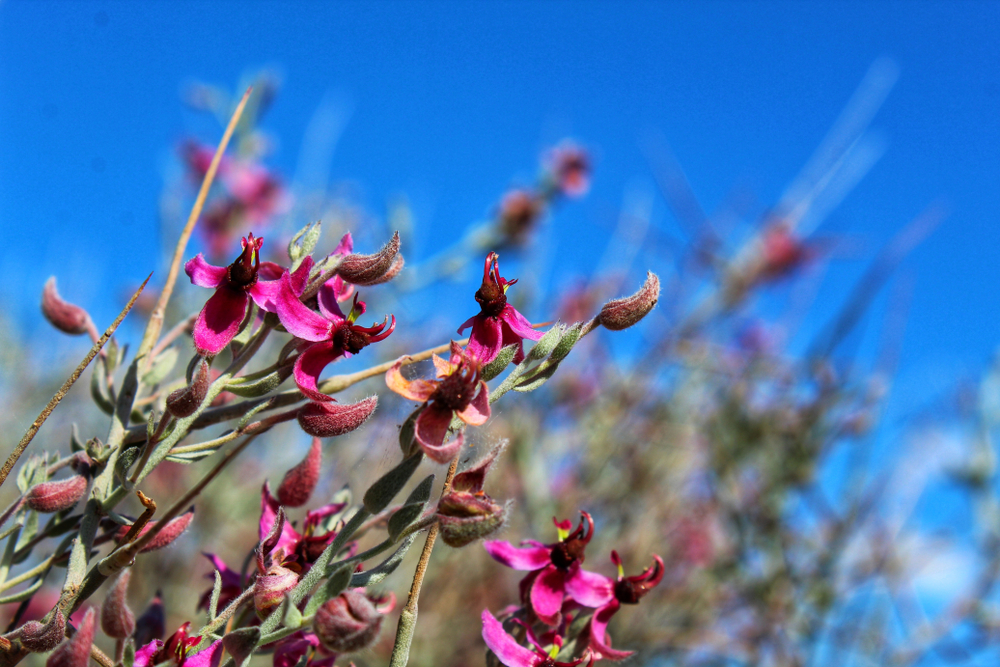
The Krameria bicolor, or Ratany,## Ratany (Krameria bicolor)
The Krameria bicolor, or Ratany, is a small desert shrub known for its striking pink or purple flowers that bloom in spring and early summer. Native to the arid regions of the southwestern United States and northern Mexico, it thrives in rocky, well-drained soils. Its deep taproot allows it to access water from underground sources, making it highly drought-tolerant. The shrub’s leaves are small and hairy, helping to reduce water loss in the intense desert heat. It is also a hemiparasitic plant, meaning it attaches its roots to nearby plants to draw additional nutrients and moisture. This unique survival strategy allows it to flourish in nutrient-poor desert environments. Its flowers are an important nectar source for bees and other pollinators, contributing to the health of desert ecosystems. The plant has also been used in traditional medicine for its astringent properties.
Desert Trumpet (Eriogonum inflatum)

The Eriogonum inflatum, or Desert Trumpet, is a distinctive plant found in the deserts of the southwestern United States. Its most notable feature is its swollen, inflated stems, which give the plant its common name. These hollow stems may help the plant survive in arid conditions by storing carbon dioxide for photosynthesis during droughts. It thrives in rocky, well-drained soils, and its small yellow flowers bloom in late spring and early summer, attracting pollinators such as bees and butterflies. The plant’s roots are deep and extensive, allowing it to access moisture far below the surface. Its stems also help reduce water loss by minimizing the plant’s exposed surface area. Historically, indigenous peoples used the stems of this plant as smoking tubes or for medicinal purposes.
This article originally appeared on Rarest.org.
More from Rarest.org
16 Historic Landmarks Hidden in Unexpected Urban Locations

Urban landscapes often hide history in plain sight, blending ancient landmarks with modern settings. These historical gems, tucked away amidst busy streets and skyscrapers, offer a glimpse into the past in unexpected places. Read More.
20 Legendary Cities Lost to Time and Rediscovered
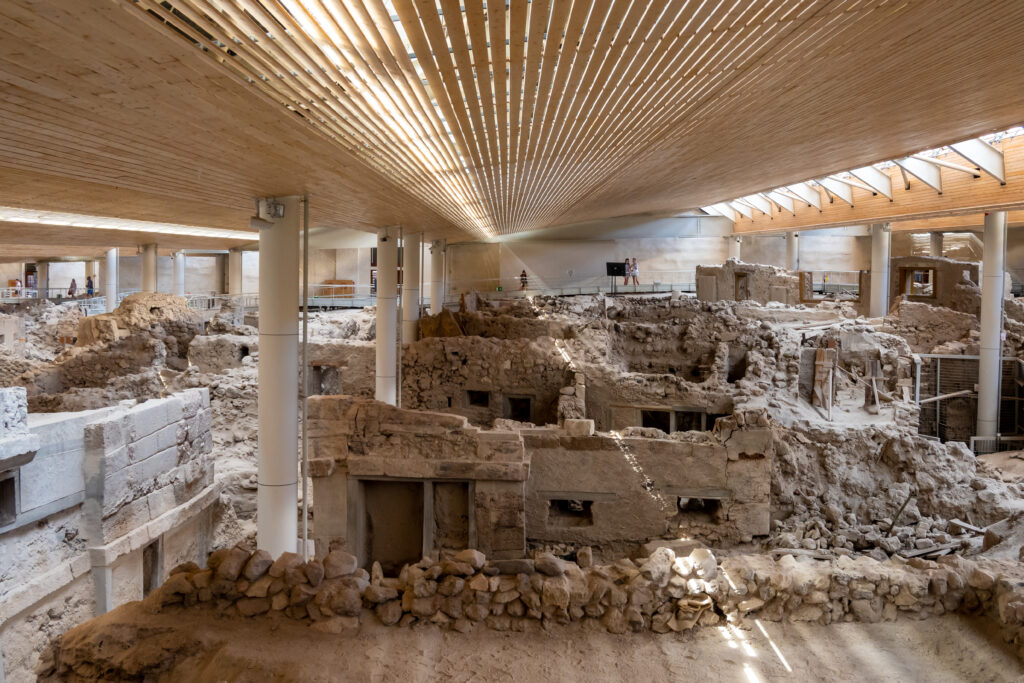
For centuries, the world has witnessed the rise and fall of great civilizations. Many of these cities, once bustling with life, were buried by time and forgotten by history. Read More.
20 Rarest Chicken Breeds for Egg and Meat Production
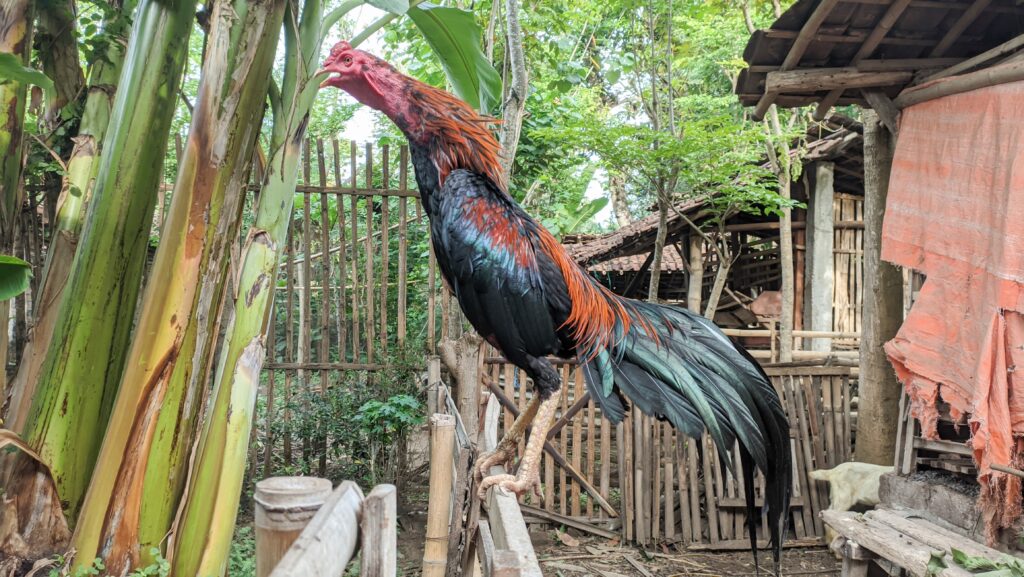
If you’re looking to raise chickens that offer both unique qualities and practical benefits, rare breeds can be an excellent choice. These chickens are not only valued for their distinct appearances, but they also provide high-quality eggs and meat. Read More.
